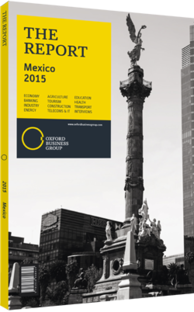Levelling the playing field: Price reductions and increased competition seen as initial results of reform
Recent regulatory reforms are starting to produce results in Mexico’s telecoms sector. Although a new legislative bill was signed into law by President Enrique Peña Nieto in June 2013, it was not until mid-2014 that the secondary laws were implemented. The new laws were put in place as a way to curb the supremacy of Amé rica Móvil, which was declared a dominant player by the new sector regulator in 2014 due to its control of over 70% of the mobile telecoms market and fixed lines.
The reform’s impact has been positive so far. Prices for mobile telecoms fell by 17% between February 2013 and January 2015, according to the Federal Institute for Telecommunications (Instituto Federal de Telecomunicaciones, IFT). Prices for global telecoms services fell 15% over the same period. However, market shares for América Móvil have remained fairly steady, particularly in mobile, where Telcel maintains a user share of around 70% and up to 73% of revenues. This is expected to change in 2016 once competitors are granted access to América Móvil’s wholesale services and infrastructure to complement their own facilities.
Asymmetric Regulations
The early results of the ongoing reforms have been achieved through very specific legislation that changed the balance of power. A key aspect was the establishment of zero interconnection fees for all operators except Telcel, América Móvil’s mobile operator. Due to the company’s dominance, interconnection fees had acted as an economic transfer of resources from smaller operators to the larger one. With their elimination for other market operators, these financial resources can now be channelled to benefit telecoms users and increase smaller operators’ market share, spurring competition.
“The money that was being paid in interconnection fees to the dominant player can be used to rent more towers, increase coverage, create new offers and lower prices,” Gonzalo Rojon, director and senior partner at The Competitive Intelligence Unit, told OBG. The new secondary law also prohibits América Móvil from discriminating between on-net and off-net calls, and from establishing exclusivity agreements with equipment vendors, which has helped level the field. The secondary law also had an impact on the fixed-line segment by eliminating premiums charged for long-distance fixed communications within the country.
Before the approval of the secondary law, in March 2014 the IFT established asymmetric measures to help curb the market power of Telmex and Telcel, including obligations to publish public offers to facilitate the provision of wholesale services and access to their infrastructure. So far there has not been a significant impact from these measures, but this is expected to change in 2016, as the IFT has been working with the operators and conducted public consultations to amend the shortcomings of the initial public offerings.
New Player
The new rules are spurring competition and the market is starting to open up. “The emergence of new offers has been felt mostly in the post-paid segment, but it is slowly permeating prepaid, which remains huge in Mexico,” said Rojon. This has made the sector more attractive for foreign investors, prompting US telecoms giant AT&T to enter the market. In early 2015 the company confirmed it would pay close to $1.9bn to acquire mobile operator Nextel from NII Holdings. This was the second acquisition by the US-based provider after it had earlier secured Iusacell, another Mexican operator, for $2.5bn from conglomerate Grupo Salinas. AT&T expects to merge the two companies together to create a viable competitor in the Mexican market. The acquisition will nonetheless need final approval from the IFT. AT&T also announced that it plans to integrate the companies into a telecoms business that will include both the US and Mexico.
Under Review
The regulations are expected to gradually curb América Móvil’s dominance, but the process may take time. Every two years the IFT will conduct a review to establish whether or not América Móvil remains dominant, and then decide whether to retain asymmetric legislation. So far, the new rules have brought dynamism to what was a stagnant sector.
You have reached the limit of premium articles you can view for free.
Choose from the options below to purchase print or digital editions of our Reports. You can also purchase a website subscription giving you unlimited access to all of our Reports online for 12 months.
If you have already purchased this Report or have a website subscription, please login to continue.

